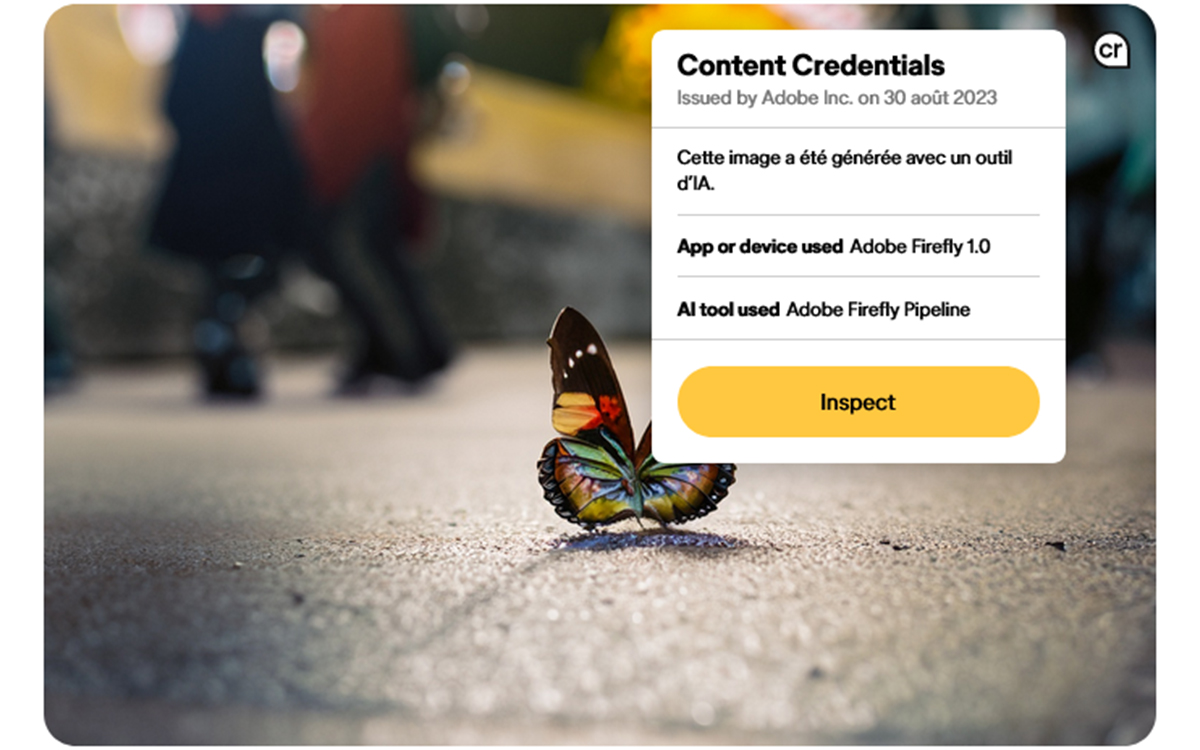Adobe wants transparency and created an icon that the company wants to see among as many people as possible. Its goal: to clearly show whether a photo was generated using artificial intelligence or not, among other things.
Pope Francis in a white down jacket, Donald Trump being arrested by the police, mountains of trash in front of the Eiffel Tower… All these viral photos have one thing in common: they are false. It’s a artificial intelligence who was responsible for creating them. Since the arrival ofGenerative AIit is increasingly difficult to know if a photo is real or notas it is easy to produce almost what you want in just a few clicks.
Everyone has their own idea to easily identify this type of cliché. Google uses the invisible SynthID watermark for example. The problem is that multiplying these initiatives makes the task a little more complex. The best would be if there was just one, used by everyone. Adobe has precisely this idea in mind and unveils the logo “cr“, for Content Credentials (CC was already taken by the association Creative Commons). The new label was developed by several member companies of the group Coalition for Content Provenance and Authenticity (C2PA), including Adobe and Microsoft are part.
Adobe would like everyone to adopt its symbol to recognize AI-generated images
When it is affixed to an image, you can click on the icon to display several information: who owns it, when it was created, was it made with an AI, if so which one, etc. Of course, all these elements are included in the metadata. There is therefore no point in deleting the photo icon to prevent access to the information. Content Credentials can even save previous versions of the fileavailable via the tool Check proposed by C2PA.
Also Read – Google Unveils AI That Makes Photo Manipulation Far Too Easy, Photoshop Can Shake
The idea is welcome, but it will only be truly effective if the majority of stakeholders play the game by adopting it. Microsoft will give up its in-house system to do this, but not sure that Google, among others, will do the same.
